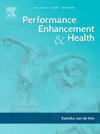Athletes from Great Britain report greater doping likelihood than Greek and Italian athletes: A cross-sectional survey of over 4,000 athletes
IF 2.9
Q2 HOSPITALITY, LEISURE, SPORT & TOURISM
引用次数: 0
Abstract
In the past twenty years, a large body of research has examined who is more likely to dope as a function of participant variables, such as gender, sport type, and competition level. However, this research is limited as studies are often conducted on modest sample sizes from one country. To overcome this issue, we recruited a large sample of athletes across three countries to examine differences in doping likelihood as a function of participant variables. Athletes (N = 4,644) were recruited from Great Britain (n = 2,505), Greece (n = 1,044), and Italy (n = 1,095) and asked to complete an anonymous measure of doping likelihood. Results indicated that doping likelihood scores were greater in men than women, for athletes competing in non-Olympic sports (e.g., American football, kickboxing, netball) than Olympic sports (e.g., Athletics, basketball, football) and in British athletes than both Greek and Italian athletes. We found an interaction between country and competitive level. Specifically, in Great Britain, higher competitive level athletes reported greater doping likelihood than lower competitive level athletes, which was not found for Greek and Italian athletes. Our results highlight that athletes report greater doping likelihood for those that are 1) from Great Britain, 2) men, and 3) participating in non-Olympic sports. We also show that differences in doping likelihood between competition levels may differ depending on country of residence.
一项针对4000多名运动员的横断面调查显示,英国运动员比希腊和意大利运动员服用兴奋剂的可能性更大
在过去的二十年里,大量的研究调查了谁更有可能吸毒,这是参与者变量的函数,比如性别、运动类型和比赛水平。然而,这项研究是有限的,因为研究通常是在一个国家的适度样本量上进行的。为了克服这一问题,我们招募了来自三个国家的大量运动员样本,以检验兴奋剂可能性的差异作为参与者变量的函数。来自英国(2505)、希腊(1044)和意大利(1095)的运动员(N = 4644)被要求完成一项匿名的兴奋剂可能性测量。结果表明,男性运动员服用兴奋剂的可能性得分高于女性,非奥运会项目(如美式足球、自由搏击、无板篮球)的运动员高于奥运会项目(如田径、篮球、足球)的运动员,英国运动员高于希腊和意大利运动员。我们发现了国家和竞争水平之间的相互作用。具体来说,在英国,高竞技水平的运动员比低竞技水平的运动员服用兴奋剂的可能性更大,而希腊和意大利运动员没有发现这一点。我们的研究结果强调,运动员服用兴奋剂的可能性更大的是:1)来自英国,2)男性,以及3)参加非奥运会项目。我们还表明,不同比赛水平之间的兴奋剂可能性差异可能因居住国而异。
本文章由计算机程序翻译,如有差异,请以英文原文为准。
求助全文
约1分钟内获得全文
求助全文
来源期刊

Performance enhancement and health
Social Sciences-Health (social science)
CiteScore
4.70
自引率
0.00%
发文量
27
审稿时长
57 days
 求助内容:
求助内容: 应助结果提醒方式:
应助结果提醒方式:


